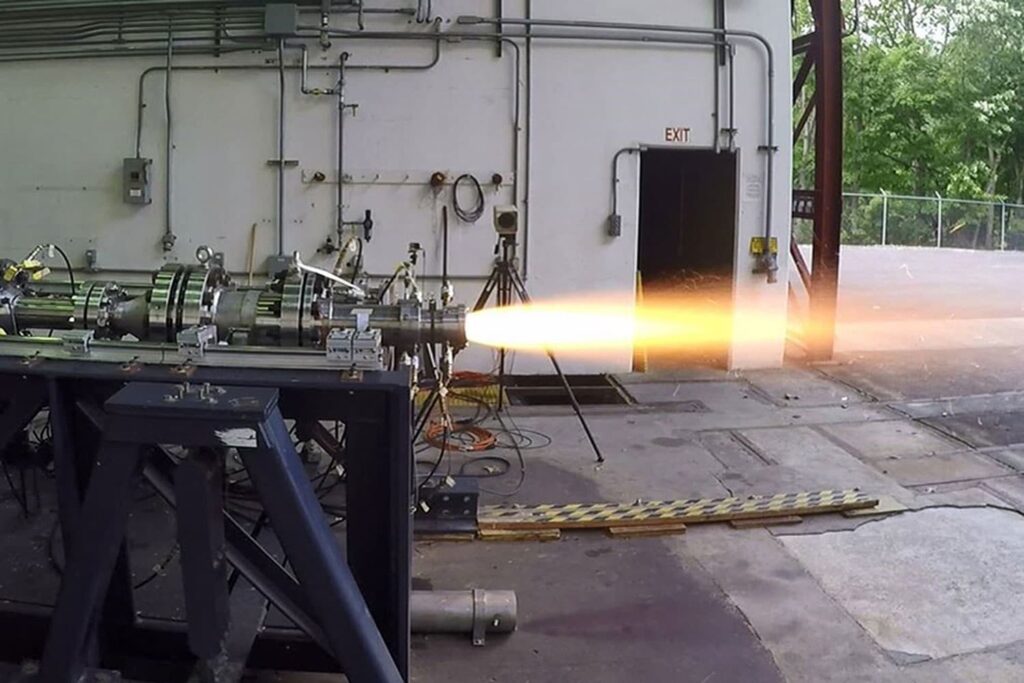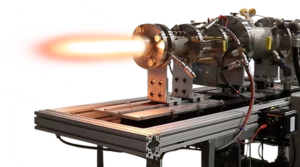
WASHINGTON: The Army is about to award development contracts for future artillery shells that will look more and more like missiles, with precision guidance, fins, and even ramjet engines. The program – part of a much wider buildup of US missile and cannons – aims to boost both range and accuracy far beyond anything possible with gunpowder alone. The goal: enable the currently outgunned and outranged US artillery force to compete with more advanced Russian and Chinese guns.
The US Army has long had rocket-boosted howitzer shells. The Cold War M549A1 has a range of roughly 30 kilometers (not quite 19 miles). The new XM1113 Rocket Assisted Projectile goes 40 km (25 miles) or more from the current M109 Paladin cannon and 70 km (44 miles) from the XM1299 Extended Range Cannon Artillery (ERCA) now in development. But to break triple digits – 100 kilometers (62 miles) and more – you can’t rely on rockets: You need something much more powerful, like a ramjet.
There are three main ways you can extend the range of a projectile, and the Army’s Extended Range Artillery Munitions Suite is exploring all of them in combination for the future XM1155 shell, ERAMS project manager Nick Berg told me in an interview:
- Increase muzzle velocity. The faster the projectile comes out of the gun barrel, the farther it can go before drag and gravity bring it down to earth. Higher muzzle velocity is the emphasize of the XM1299 ERCA howitzer, which has a longer barrel and more powerful propellant than the current Paladin.
- Add lift surfaces. Basically, this means adding wings and fins to the shell – like a missile or miniature aircraft – to make it more aerodynamic. The more lift generated, the longer the projectile can fly. Of course, the wings, fins, and electronics all have to survive the brutal shock of being fired from a cannon.
- Add “post-launch propulsion.” This is where rockets and ramjets come in: They kick in after the projectile has cleared the gun barrel (hence “post-launch”) to give it an extra burst of thrust. Again, the motors first have to survive the shock of launch.
“We’ve actually investigated and looked at all of those areas,” Berg told me. “We really have focused on lifting surfaces to increase your glide [distance], but then also we’ve looked at solid fuel ramjets as a post-launch propulsion mechanism to boost you out to extended ranges.”
Why ramjets over rockets? The basic difference is that rockets contain their own oxidizer to burn their fuel, while jets of all kinds – from ramjets to turbofans – get their oxygen from the atmosphere. (Hence the name “air-breathing engine”). That saves weight, since you don’t have to carry oxidizer; it improves safety, since the fuel doesn’t ignite as easily; and it extends endurance, since the jet can keep thrusting as long as it has air and fuel. (A longer, gentler burn is also more aerodynamically efficient, reducing drag). A rocket-boosted artillery shell might burn for just 10 seconds, Berg told me, while a jet could conceivably last much longer.
How does a ramjet differ from other kinds of jet engines? All jets work by sucking in air at the front end, compressing it, mixing it with fuel, and igniting it, blasting thrust out the back end. (The shorthand is “suck, squeeze, bang, blow.”) At subsonic speeds, you need to mechanically compress the air with some kind of fan, like the one on the front of an airliner’s turbofan engine. But at supersonic speeds, around Mach 2, the air is coming in the front of the engine so fast that it compresses itself, without mechanical assistance: That’s a ramjet.
A ramjet’s actually mechanically simpler than a conventional jet, since it doesn’t need a compressor, which is one less thing that might break when shot out of a cannon. Historically, the hard part with ramjets has been that they don’t work at speeds below Mach 2 – but being shot out of a cannon gets you to those speeds.
So ramjets are in some ways a natural fit for artillery propulsion. That doesn’t make them easy to build.
“The ramjet does offer a little more technical challenge,” Berg told me, because you have to fit sophisticated, shock-resistant electronics into a small package along with inlets to feed air to the ramjet itself.

Some of technology involved gets pretty exquisite, even exotic. The munition’s control system needs to sense airflow, pressure, heating, including phenomena that don’t happen at lower speeds, said Bob Bakos, CEO of Innoveering, a small firm working with the Picatinny Arsenal Armaments Center on the ramjet ammo. “You’re talking about thousands of degrees” of heating from, essentially, the friction of the air, he told me. To steer in such extreme conditions, he went on, the projectile needs the traditional flaps and fins, but it might be possible to use tiny air ducts, electromagnets, or even plasma to affect the airflow and correct course.
Once the XM1155 shell is developed, a future “cargo” variant could be used to deliver other payloads besides explosives, such as sensor packages and jamming pods.
The Army’s already run Phase I of the ERAMS program, with participation by Boeing, General Dynamics, Northrop Grumman, and Raytheon. Now it’s working on two contracts for Phase II, with awards expected within two weeks. A Raytheon spokesman confirmed they’re no longer working on the program, while Boeing confirmed they’re competing.

